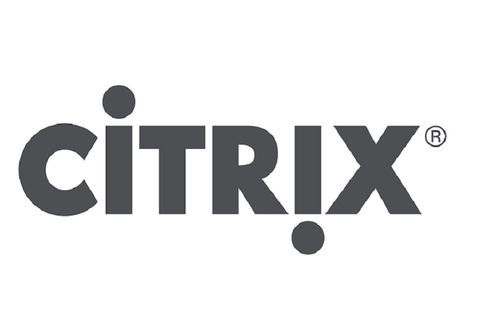CloudPro Verdict
Pros
- +
Fine-grained user permissions; Plenty of useful and powerful features including FTP access
Cons
- -
Significantly more expensive than rivals
Bought by Citrix in 2011, ShareFile is a business-oriented cloud storage service with strong user management options. A range of subscription options are available, starting at $192 (£138) per year or $20 (£14.40) per month for a single-user Personal account, aimed at small business startups and providing 100GB of online storage, and going all the way up to bespoke Enterprise solutions, which can combine cloud and on-premises storage.
We've reviewed the Business subscription, which costs a minimum of $1,200 (£865) per year - if you pay monthly, you'll be charged $125 (£90) per month for the same account. That includes five employee accounts and unlimited storage, which starts out at 1TB but can be increased on request. Extra employee accounts can be added at a cost of $10 (£7.20) per month each.
The Business package has plenty of useful features, some of which, such as unlimited version control and the ability to invite people to collaborate via email, are common to many cloud storage services. Others are more unusual, such as FTP access to your storage, file check-in/check-out to ensure that two team members aren't simultaneously editing the same document, archiving as an alternative to deletion and the ability to invite others to upload files to a File Drop for your attention.
However, we were disappointed to find that enforcing view-only access to files - a common feature among other cloud storage providers - only becomes available at the Virtual Data Room subscription tier, starting at $3,540 (£2,550) per year.
ShareFile uses servers based in Germany and the Netherlands to store EU customers' data and backup mirrors, in compliance with EU data protection law. This puts it at an advantage over rival services that cannot guarantee that your data will stay within the EU, given the recent collapse of the EU-US Safe Harbor framework.
User interface
When you first sign in to your ShareFile admin account, you're invited to follow a simple tasklist at the bottom of the screen to help you get to grips with the system's features. This takes you through sharing and uploading files, creating folders, adding users and using ShareFile's desktop and mobile apps.
ShareFile's web interface is in the same mould as most other online storage and file sharing services, from Google Drive to Dropbox. Your default view shows your private file storage area, where you can create folders and upload files. There's no right-click functionality, so you'll have to use a button to create folders, but you can upload files by dragging and dropping them into the main browser pane from your desktop.
Magnifying glass icons next to files allow you to preview them without having to download them, although you'll need to enable Office Online integration in the admin settings to preview most document formats. This works a little more slowly than the integrated preview and editing options of document creation and storage services such as Google Drive, however, and images can't be browsed as galleries.
A tab bar at the left of the screen lets you move from your private storage space to your Shared Folders, your favourite folders list - folders can be set as favourites via a star icon - and Connectors, which allow you to connect personal cloud storage accounts on services such as Google Drive, Dropbox and Box.
However, although you have to set up your Connectors via the web interface, you can only actually use them on the iOS version of the ShareFile app. In combination with the fact that many businesses would rather have staff keep their personal cloud storage accounts safely separated from their work accounts, the limited platform support makes the feature rather redundant.
Below the Connectors, you'll find your inbox, where files and invitations to submit files shared with you by others appear. This is where you’ll also find your Recycle Bin, where you can view, restore and permanently delete files, and your File Box. The File Box provides temporary storage for files that you or others have uploaded via the Share a File or Request a File feature. Files kept here will be deleted after 30 days, and administrators can view File Boxes belonging other users.
Tabs across the top of the screen vary depending on whether or not you're signed in to an admin account, and on what other permissions your account has. Users with admin privileges will see shortcuts to the Manage Users page and an Admin page that allows you to configure a variety of account settings. These include custom colours and logos, detailed reports of your users' activity, a remote upload form creator that so you can have users of a website upload files to a File Box and security settings such as two-factor authentication and requirements for PIN codes on mobile devices.
The Share and Request top-bar options spawn mouse-over menus that allow you to generate a link or an email that can be sent to recipients that you either wish to share a file with, or ask to upload some information to your default File Box or any other folder you specify. You can set access requirements, such as limiting the period for which the link is valid or requiring users to sign in to use it.
All users can access and tweak their personal account settings, where they can set their time zone, manage their address book and check their FTP and WebDAV settings. They can also set up distribution groups to make it easy for them to send files to multiple clients and colleagues; everyone working on a specific project, for example. Finally, an Apps tab gives you quick access to links and downloads of all Sharefile's mobile and desktop apps for platforms including Windows, Mac OS X, Android, Blackberry and iOS.
The apps all provide variations on the web interface, with the iOS version being by far the best looking and most capable. Only the iOS app can access Connectors to other social media platforms, while the Windows and Android apps only give you access to your home folders, shared folders and favourites. In all versions, you'll find your File Box nested under the My Files and Folders. You can share, upload, request files, create files and folders and, in the mobile apps, create brief notes. The iOS version also allows you to record audio notes.
User administration
A key feature of ShareFile is the level of control it gives you over your users and the folders they can access. You can create users as either Employees or Clients. Employees can be granted access to a wider range of ShareFile's features, and get extra software options and access to ShareFile Sync - a Dropbox-style synchronised desktop folder - and an Outlook plugin.
When you - or another Employee user with the relevant permissions - add a Client user, you can decide whether they're allowed to change their password, which of your folders they're allowed access to, whether or not they can delete files or add extra users to the folders, and whether they should be notified of changes to the folders they have access to. Slightly annoyingly, while you can create new folders during this part of the process, you can't delete or move a folder that you've accidentally created in the wrong place. Unlike Employees, Clients don't get their own personal storage folders.
With all that complete, you can generate an activation link for your Client user or have ShareFile send them a welcome email, with or without a personalised note. You add as many Client accounts as you like, to make it easy to securely share files with people outside your organisation, while extra Employee accounts add to the price of your subscription.
You get some choice about how you want to add users: either one at a time, from a correctly formatted Excel spreadsheet, while Enterprise level subscriptions support Single Sign On via Active Directory, although you'll need a SAML federation server to provide your users with remote SSO when they're out of the office.
The options for Employee accounts are far more fine-grained than for Clients, with a wide range of options and privileges that can be enabled for your users. By default, Employees can create folders, use a personal File Box, manage Client accounts, edit the company's shared address book and their own settings.
You can also choose to give them some or all of a range of admin privileges, including the ability to access other users' personal File Boxes, create File Drops, view company-wide usage and billing data and assign admin privileges to other users. Both Employee and Client accounts have access to the main ShareFile web interface and cross-platform apps.
We were pleased to see that ShareFile's user controls include the ability to see exactly which devices a user has linked to their account and to lock, wipe, or revoke access privileges from individual devices, making it easy to deal with lost or stolen hardware.
Conclusions
ShareFile has a handful of features which distinguish it from the majority of cloud storage services, which may appeal to companies with specific requirements, but most of these, such as StorageZones - an on-premises storage server that can be linked to your ShareFile account - are only available as part of a bespoke Enterprise-level subscription, the price of which will depend on your business's needs. For more cost-conscious businesses who want complete control of their business cloud, a local OwnCloud server may be a more appealing option if your broadband connection is up to the task.
For most SMEs, ShareFile is expensive and its browser interface isn't as polished as most of its rivals'. It has some very powerful features, and we particularly appreciated being able to use FTP to connect to our remote storage, which makes it compatible with almost any backup solution. However, at $1,200 (£865) a year for five users, ShareFile Business is prohibitively expensive compared to similar services such as Dropbox Business, which comes in at £550 per year, and Box Business, at £660 a year for five users.
Verdict
A powerful enterprise-oriented cloud storage and file sharing service, but be sure you need its fine-grained permissions and deep features before paying its steep fees
K.G. is a journalist, technical writer, developer and software preservationist. Alongside the accumulated experience of over 20 years spent working with Linux and other free/libre/open source software, their areas of special interest include IT security, anti-malware and antivirus, VPNs, identity and password management, SaaS infrastructure and its alternatives.
You can get in touch with K.G. via email at reviews@kgorphanides.com.


